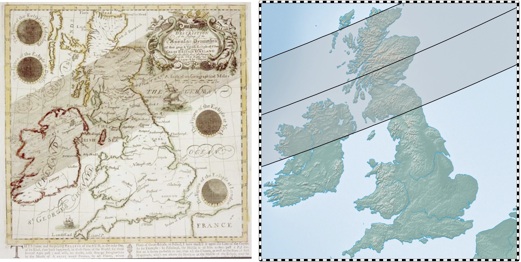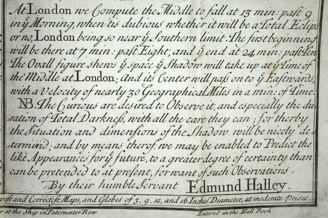The total solar eclipse of 1706
The total solar eclipse of 1706 May 12 cut a diagonal path across Europe from Morocco to Siberia and was widely observed by the public and astronomers of the day such as Cassini and Flamsteed. This eclipse was the subject of at least four eclipse maps of different styles and precision.
Symon van de Moolen of Amsterdam was a mathematician with an interest in solar and lunar eclipse calculations. In 1705, he published a 16-page book on the 1706 eclipse which contains the eclipse map below. Andreas van Lugtenberg, a teacher of navigation at Rotterdam, published another eclipse map roughly showing the eclipse with two straight lines against a background of the world. This map shows North America with a curious appendage in the northwest.
In 1707, the cartographer Johann Homann and astronomer Johann Doppelmayr began collaborating on a series of eclipse maps, the first of which appears to the upper-right. Homann and Doppelmayr’s map was copied by Peter Schenk Sr., a common practice of the day.




